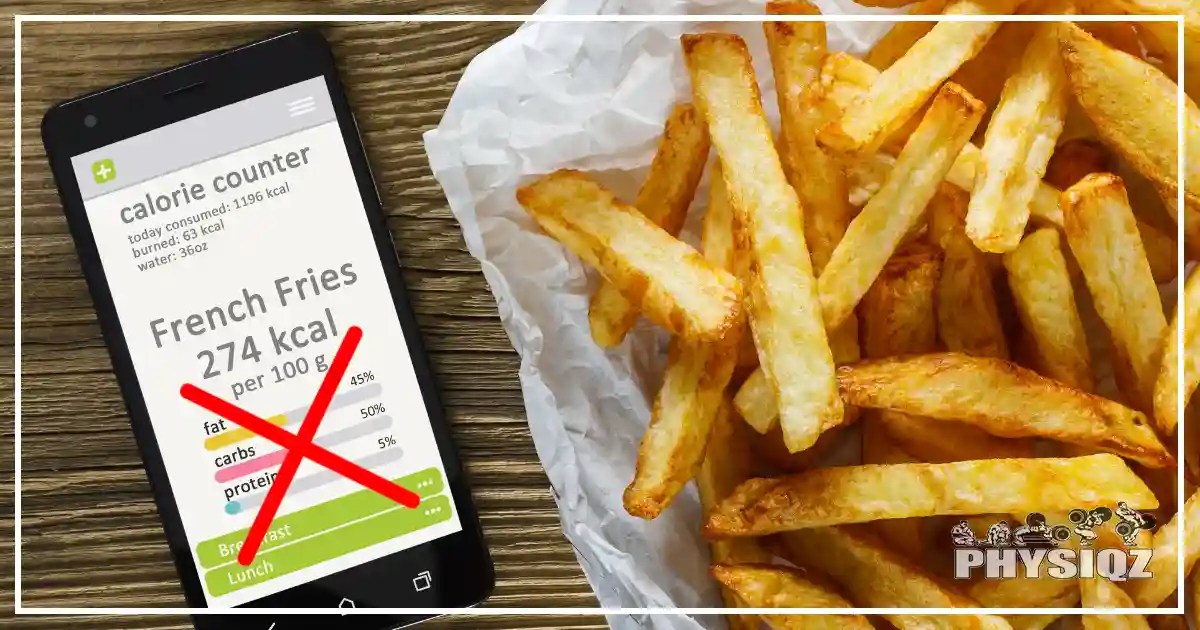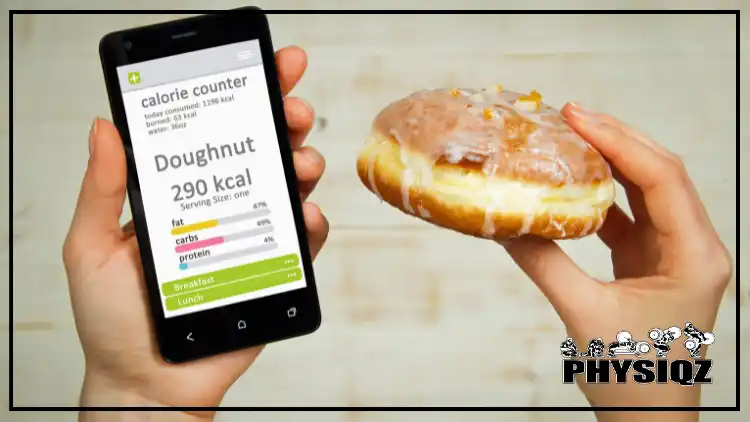
Instead of fixating on the conventional notion of calories in vs. calories out and all its complexities, individuals who prefer not to tally up their food intake can discover methods to sustain weight without calorie counting by using an easy lap trick.1
The “trick” involves adding in a brisk lap around the neighborhood or any other enjoyable activity to increase the amount of calories burned in a low-effort way. In turn, dieters can determine whether eating habits need to be adjusted or if they can stay the same within about 2 weeks of not counting calories and doing the lap trick. Even if they do some adjustments, a combination of movement and small dietary changes can ensure no weight is gained.
In the end, the difference between calories consumed and calories burned is the leading determination of weight loss, gain, or maintenance so finding a balance between diet and movement will be the ultimate factor in maintaining weight.
Is it Possible to Maintain a Healthy Weight Without Counting Calories or Dieting?
Maintaining a healthy weight without calorie counting or cycling through unrealistic diets can become a reality, but it doesn’t happen without any effort. The old saying “you can’t have your cake and eat it, too” rings true, because most bodies don’t allow for eating anything desired without consequence. So with that in mind, coming up with a plan and sticking with it is imperative for continued success, even if it’s something as vague as intuitive eating.
For the most part, weight maintenance isn’t extremely difficult with or without counting calories, but it’s not a linear path either. It takes some investigation and adjustment when starting, it may be necessary to make both minor and major adjustments along the way.
Being too rigid or drastic with lifestyle changes can quickly lead to burnout and failure, so staying flexible and taking small steps will be the ultimate way to stay on course but there’s other factors that may be working against you.
Factors That Can Affect How Easy or Hard it is to Maintain Weight
Staying at a healthy weight isn’t always easy. Even if someone has been at a certain size their entire adult life, there are many issues that can slowly or suddenly affect weight, such as:
- Age: Metabolism and activity level decreases as someone gets older
- Hormonal imbalances: Hormones play a big role in how people gain or lose weight
- Illness and/or injuries: These can both cause changes to energy levels and abilities
- Stress: Can contribute to overeating and lack of self-control and awareness
- Sleep issues: Result in low energy levels and mindless eating
- Lifestyle changes (i.e. a sedentary job or retirement): Slowing down can reduce TDEE
- Poor eating habits: Being in a cycle of unhealthy food choices2
No matter the case, it’s still possible to maintain weight but if any of these matters above aren’t addressed, it’ll be an uphill battle.
Tips to Increase Activity: Learning How to Sustain Weight Without Calorie Counting
The biggest tip on maintaining weight without calorie counting is to move and increase physical activity! However, movement does not have to consist of hours-long sessions at the local gym or waking up at the crack of dawn to fit in a 5 mile run before work and it may take awhile to learn what works for you.
Calories are not biased; they do not care whether they are burned by doing something dreadful or something fun. So, instead of labeling these added forms of movement as “exercise” and a “chore”, find an entertaining way to work in additional physicality to everyday life and it could end up being an activity to look forward to instead of a miserable task.
Low-Intensity Activity (The Lap Trick)
Adding low-intensity activity throughout the day or the week will increase the amount of energy burned while moving and and at rest. This is also known as non-exercise activity thermogenesis or “NEAT”.3
One of the easiest tricks to increase NEAT is to take a walk. It may seem too simple, but something as uncomplicated as grabbing the leash and taking Fido for a walk or chatting with a friend while briskly strolling around the block can make a noticeable impact on calorie expenditure. Those two activities seem more like play than work and can be a massive factor in maintaining weight without counting calories.
The reason that low-intensity activity is a great option for those wanting to sustain their weight is, that unlike extreme workouts, this movement doesn’t typically cause severe fatigue or excessive hunger. So, instead of feeling completely derailed due to high exertion, add in enjoyable movement instead to ensure no big energy swings or extra food challenges.

Source: Comstock Images via Canva.com4
Once the love of a new activity is discovered and becomes a part of a daily routine, the body responds in a great way. Before any of this extra movement is added in, a baseline of calories is burned by doing basic functions (such as breathing, digesting food, etc); this is called Basal Metabolic Rate, or BMR. The real number to zone in on is Total Daily Energy Expenditure, or TDEE, which is the number of calories burned doing basic functions plus calories burned doing anything above and beyond those basic functions. TDEE can be increased by adding in exercise, but that number can also be expanded by increasing NEAT.
Walking isn’t the only secret to increasing NEAT; there are countless engaging activities that get the body moving that are both fun and beneficial without being extreme.
Let Loose By Going Out Dancing More
If the thought of a structured workout over the weekend isn’t appealing, grab some friends and head to a local hotspot to dance the night away. 30 minutes of dancing can burn around 200 calories, depending on body weight, which is equivalent to a light jog.5
Be aware of the fact that it is very easy to negate the calories burned while dancing by drinking sugary alcoholic beverages and eating calorie-laden bar food. These things aren’t off limits, but it is important to have a plan before going out on the town to be prepared instead of trying to make decisions at the moment.
Take a Hike & Enjoy the Sights of the Great Outdoors
Instead of being chained to workout equipment, scope out a green space or nature preserve in a surrounding city. Getting outside and breathing in the fresh air has many benefits, but taking an hour or so to explore a trail is an invigorating way to get the heart pumping and counteract some calories.
Because hiking is typically on uneven terrain, if performed at the same pace, the hiker could expect to burn 1.5 times the amount of calories as someone walking.6 The incline of the trail will also result in toned leg muscles and a strengthened core.
Swim Some Laps & Cool Off
Why sweat it out at the gym when diving into the pool, lake, or ocean can not only burn some calories but also allow some fun in the sun with family and friends.
Swimming laps, treading water, or just walking across the pool can expend energy while not being hard on the body. Allow the water to aid in an easygoing, low-impact activity that can help with weight maintenance goals.
Those feeling adventurous could also try their hand at a water sport such as water skiing or even tubing. Both these activities are exhilarating and contribute to building strength as well as burning calories.
Practicing Yoga or Pilates & Find Peace
Sometimes, getting centered is exactly what the body and mind need. Shedding calories while working on flexibility, core strength, and meditation is an enriching way to add movement into a daily or weekly routine.
In fact, one study showed that those who practice yoga and Pilates develop and maintain a healthier lifestyle than those who don’t.7
Try Out Cycling or Spin Classes to Blow Off Steam
If seeking a more intense and energetic way of burning calories, trying out a spin or cycling class can be a fun alternative to traditional biking. These group classes are typically lively and include motivation and encouragement from the instructor.
If the camaraderie of group activity is motivating, then cycling or spinning could be helpful in maintaining weight without counting calories. While racing to the invisible finish line during one of these classes, calories burned will far exceed many other activities performed in the same amount of time. It’s safe to affirm that cycling 1 hour a day for weight loss and weight maintenance is a proven method.

Source: bowdenimages via Canva.com8
Eating Tips on Maintaining Weight Without Counting Calories
All the activities touched on above are excellent alternatives to counting calories, but sometimes, the extra movement alone is not enough to curb weight gain.
If weight maintenance becomes a struggle, it may not only require some investigation to ensure that underlying health issues are properly dealt with, but a change in diet may also be necessary. This doesn’t mean obsessing over food and becoming a calorie-counting aficionado; it just means making some adjustments here and there and becoming more mindful.
Changes to eating habits can be overwhelming; but instead of making a big, sweeping change all at once, consider taking the time to make small alterations. Take a pause between each adjustment to feel the full effects of the change and evaluate whether it is both helpful and realistic before moving on to the next dietary modification.
Let Your Body Be Your Guide & Try Intuitive Eating
Following a written diet doesn’t have to be the only path to success. Humans, for centuries, have used intuitive eating to stay nourished and healthy. As the years have progressed and food has become less scarce and easy to access, many people have become less mindful when it comes to meals.
When tired, busy, or in a rush, it is common to fall prey to distracted eating. With little thought, it is easy to finish off a child’s leftovers, munch on a bag of chips while engrossed in a television show or eat an entire large french fry in the car on the way home from picking up dinner.
Intuitive eating promotes removing morality from food; there are no good or bad foods. Instead, it encourages those following this lifestyle to employ awareness.
When using this method, it’s important to initiate an inner dialogue to become familiar with hunger signals, triggers, and other signals given by the body. Some considerations to cycle through before or during eating to promote mindfulness would be:
- Consider whether this is true hunger by reflecting on the timing of the last meal or snack, and assess whether it logically aligns with the sensation being experienced.
- Assess if the food being consumed is truly satiating. Opting for high-quality calorie options can significantly prolong the feeling of fullness.
- Consider what may be prompting the desire to eat if it’s not genuine hunger. Reflect on the possibility of boredom, stress, anxiety, sadness, etc., and opt for a relaxing or enjoyable activity to counteract these negative emotions instead of using food to mask them.
- If genuine hunger is present, consider the most conducive environment for satisfaction. Experiment with sitting down at a table, allowing yourself to fully focus on the meal or snack without rushing or being distracted.9
Adopting intuitive eating means enjoying food while eating when hungry and stopping when full. Exploring intuitive eating for weight loss could help individuals overcome food guilt and break free from dieting cycles.
Kick Some Foods to the Curb With Elimination Dieting
If intuitive eating doesn’t have quite enough structure, an elimination diet allows those looking to maintain their figure a way to cut down on calories consumed by cutting out some common weight gain inducers like pizza, donuts, or other forms of junk food. For some, it is easier to completely remove a temptation rather than try to manage it.

Source: piotr_malczyk via Canva.com10
An elimination diet in regards to weight control typically involves ridding meals and snacks of particular types of calories or categories of food. Common items to eliminate either singularly or in combination are:
- Sugar
- Carbohydrates
- Bread
- Gluten
- Dairy
- Meat
Removing one or more of these items from a diet frequently reduces the amount of calorie-laden snacks and side dishes that can cause weight gain. What typically remains are foods that are higher in protein, fiber, and complex carbohydrates, which are the building blocks of a well-balanced diet.
An elimination diet might not only put a stop to weight gain but could also reveal a sensitivity or intolerance that wasn’t recognized beforehand. Instead of spending months trying to lose belly fat by calorie counting, an elimination diet could expose certain foods that aren’t agreeable which can exacerbate the water retention and a bloated stomach.
Completely eliminating an item and/or items from a diet might be difficult. Starting off with small changes might help the transition. For instance, instead of completely cutting out carbs, try giving up white rice, pasta, and bread. Especially if these items are consumed on a regular basis, a difference should be felt fairly quickly. As time goes on, if so desired, things can be added to the “do not eat” list.
Think About Food Less with Fasting
When counting calories doesn’t work and it feels as if intuitive eating and elimination diets focus too much on food, incorporating intermittent fasting could be a relief from that stress.
Intermittent fasting comes in various forms, but for beginners, it usually begins with one of the intermittent fasting styles outlined below.
| Intermittent Fasting Style | Description |
| Time Restricted Eating | Fasting for a large portion of the day and restricting meals to the remaining window of time |
| Eat Stop Eat | Eating normally most days but fasting for one or two full days per week |
| One Meal a Day | Only eating one meal a day throughout the week |
| Alternate Day Fasting | Every other day is fast while the remaining days are treated as normal |
Research conducted by the University of Illinois Chicago shows a myriad of benefits derived from fasting.
- Safe for most individuals with few side effects
- Improved concentration
- Noticeable improvements for those with insulin resistance and prediabetes
- Improvement of certain health risk factors
In fact, the study concluded that weight loss was on par with traditional calorie-restricted diets, such as calorie counting, with similar reduction ratios regarding fat and lean mass.11
Any of these fasting styles are ideal for those triggered by structured diets and calorie counting. Obsessing over every bite of food taken is unhealthy and fasting may lead to a peace surrounding food that few realize exists.
If fasting is something of interest to those looking to maintain weight, experimenting with the above fasting timeframes is the perfect way to find which one fits into a certain lifestyle. Because fasting revolves around when food is eaten and not what food is eaten, each of these styles garners similar results, so the final choice should be based on which plan is most doable and realistic.
Other Eating Tips to Keep a Healthy Weight
Apart from the fantastic eating choices listed earlier, there are numerous other weight loss hacks for both lazy girls and guys. Small changes or a combination of changes that feel like they make no difference may actually be the thing that leads to success; so, instead of being skeptical, give the below ideas a try!
Use a Tiny Plate
This may seem silly, but it can become second nature to fill up a plate when serving dinner. Instead of measuring out portions, grab a smaller plate and load it with food! The mind will still have the satisfaction of a full plate of food, while the waistline will benefit from fewer calories.
Consume More Water (H2O)
Instead of instantly succumbing to hunger pangs, try filling up a water bottle and chug some H20. Studies have concluded that hunger can often be mistaken for thirst. Potentially reduce calorie intake by trying to hydrate before reaching for a snack to find out if it’s actually hunger that is being felt.12
Make Substitutions
When preparing a meal, evaluate whether anything can be switched out for something with greater nutritional value. The below swaps are suggestions for common items that typically take up a decent-sized calorie footprint.
| Original | Substitution | Approximate Calories Saved |
| 1 Cup of 2% Cow’s Milk | 1 Cup of Unsweetened Almond Milk | 80 calories |
| 2 Tablespoons of Sour Cream | 2 Tablespoons of Greek Yogurt | 26 calories |
| 1 Flour Tortilla | 1 Corn Tortilla | 40 calories |
| 1 Bagel | 1 English Muffin | 200 calories |
| 1/4 Cup of Butter (in baking) | 1/4 Unsweetened Applesauce (in baking) | 380 calories |
Stop Drinking Calories
It may be shocking to hear, but a large portion of the population consumes roughly 22% of their daily calories through beverages.13 If fighting off hunger and cravings at the end of the day becomes a regular occurrence, it could be because one-fifth of the day’s calorie consumption is coming from drinks.
Reallocating calories that were in liquid form to nutritious food can help cut out the excessive snacking that could lead to weight gain. Try replacing soda for calorie-free sparkling water with a slice of lime, sweet tea for an unsweet tea with some lemon and a touch of Stevia, or rum and cola for vodka and soda.
Meal Prep
Consider taking time at the beginning of the week to prepare food in advance. This might not seem like the easiest of hacks, but with a little effort invested before the week begins, the remainder of the week will be smooth sailing.
Instead of jetting off to a drive-thru for lunch, imagine being able to walk to the kitchen and grab the delicious meal that was prepared in advance. Not having to make healthy decisions in the midst of hunger is a big calorie-saving benefit of meal prep.
Is it Possible to Lose Weight Without Tracking or Counting Calories?
When battling weight loss, dieters may be curious if they can achieve their goals without counting calories or tracking what they eat. The answer is yes; they absolutely can.
Just like for those maintaining their weight, moving is an integral part of not having to count calories for people wanting to lose weight. The more movement that is incorporated into daily routines, the more calories will be burned.

Source: SrdjanPav via Canva.com14
As for food, Intuitive eating, fasting, and elimination style diets are not just reserved for those in maintenance mode; the principles behind each of these eating styles can be achieved by those looking to lose weight as well.
The biggest difference between those looking to maintain weight and those trying to lose weight is dieters who are trying to drop pounds require a calorie deficit or they must burn more calories than what’s consumed. Achieving a calorie deficit without exercise is entirely feasible by monitoring or planning calorie intake. Weight loss requires that calories consumed be less than what is burned in a day, which means that someone trying to see the scale go down may need to put extra effort in movement goals and eating habit changes.
Some concepts to lose weight without counting calories include:
- Focusing on dietary changes first
- Consider trying out one of the eating options listed above
- Make alterations based on what is or isn’t working
- Begin adding in enjoyable movement
- Evaluate weight loss efforts
- Make additional adjustments to eating and movement if necessary
What is the Most Amount of Weight I Can Lose Without Counting Calories?
Thankfully, as expanded on above, counting calories isn’t the only avenue for weight maintenance and loss, and there really is no limit to how much can be lost through extra movement and changes in eating habits.
The biggest key to consistent weight loss is persistence. Motivation may come and go, but continuing to push forward can result in a downward trend on the scale. The internet is filled with success stories of how people lost 50 pounds or more without the burden of calorie counting, so the evidence is clear that it is possible.15
Track Your Weight Over the Course of Weeks to See if You’ve Maintained, Gained or Lose Weight
The scale can be a source of agony for quite a few people, but instead of being intimidated, try viewing it as just a small part of the health equation. The scale is a great tool for those looking to maintain weight, but it’s important to realize that one or two readings don’t paint the full picture.
The reason a single weigh-in is unreliable is due to scale inaccuracy and weight fluctuations. Scales can be off due to low battery life, uneven ground, and incorrect calibration; while weight inconsistencies can be due to:
- Water retention: salt intake, hormonal changes, and weather call all cause the scale to rise due to bloating and swelling
- Constipation: not using the bathroom for a day or two can cause the scale to creep up a bit
- Undigested food: if food has recently been consumed, it will not have had time to be broken down and digested, which will result in higher-scale readings
To get an accurate view of weight trends, recording scale readings at least three or four times a week for two weeks can indicate whether there is weight gain, loss, or maintenance. Once a clearer picture is in view, adjustments can be made to daily routines such as moving more or being more aware of food intake.
Stressing over the latest diet trends and spending countless hours at the gym obsessing over burning fat is not only unnecessary, but it’s counterproductive to living a balanced life. Instead of focusing on restrictions; consider making an effort to concentrate on enriching daily routines by adding fun movement and enhancing health with mindful eating. Learning how to sustain weight without calorie counting can ultimately be the catalyst to living a happier and more rewarding life.
References
1piotr_malczyk. “Calorie count concept.” Canva. Accessed 7 April 2023. <https://www.canva.com/photos/MAERqE5ygic-calorie-count-concept/>
2National Institute of Diabetes and Digestive and Kidney Diseases. (2018). Factors Affecting Weight & Health | NIDDK. National Institute of Diabetes and Digestive and Kidney Diseases. Retrieved July 29, 2022, from <https://www.niddk.nih.gov/health-information/weight-management/adult-overweight-obesity/factors-affecting-weight-health>
3Kravitz, Ph.D., L. (n.d.). A NEAT “New” Strategy for Weight Control. NEAT. Retrieved July 29, 2022, from <https://www.unm.edu/~lkravitz/Article%20folder/NeatLK.html>
4Comstock Images. “Woman posing with water bottle.” Canva. Accessed 7 April 2023. <https://www.canva.com/photos/MAC77werFVc-woman-posing-with-water-bottle/>
5Harvard Health Publishing. (2021, March 8). Calories burned in 30 minutes of leisure and routine activities. Harvard Health. Retrieved July 29, 2022, from <https://www.health.harvard.edu/diet-and-weight-loss/calories-burned-in-30-minutes-for-people-of-three-different-weights>
6Bubnis, D. (2020, July 29). Hiking: Calories Burned, Weight Loss, and More. Healthline. Retrieved July 29, 2022, from <https://www.healthline.com/nutrition/hiking-calories-burned#vs-walking-running>
7Lim, E.-J., & Hyun, E.-J. (2021, April 6). The Impacts of Pilates and Yoga on Health-Promoting Behaviors and Subjective Health Status. NCBI. Retrieved July 29, 2022, from <https://www.ncbi.nlm.nih.gov/pmc/articles/PMC8038747/>
8bowdenimages. “Two Women Cycling Through Park.” Canva. Accessed 7 April 2023. <https://www.canva.com/photos/MAC9KOSgHAA-two-women-cycling-through-park/>
9U.S. Department of Veterans Affairs. (n.d.). MOVE! Behavior Handouts B11: Mindful Eating. MOVE! Weight Management Program. Retrieved July 29, 2022, from <https://www.move.va.gov/docs/NewHandouts/BehavioralHealth/B11_MindfulEating.pdf>
10piotr_malczyk. “Calorie counter concept.” Canva. Accessed 7 April 2023. <https://www.canva.com/photos/MAERqHza7j0-calorie-counter-concept/>
11Botterman, L., & Carey, J. (2022, March 16). Research team provides guidelines, recommendations for intermittent fasting | UIC Today. UIC Today. Retrieved July 30, 2022, from <https://today.uic.edu/research-team-provides-guidelines-recommendations-for-intermittent-fasting>
12Little, E. (2007, May 6). Drinking Water Week: May 6-12, 2007. Fit for Duty | Fit for Life. Retrieved July 30, 2022, from <https://dcp.psc.gov/ccbulletin/articles/fitforduty_050607.htm>
13Parks, L. (2007, January 29). Beverages Contribute One-Fifth of Calories Consumed. Supermarket News. Retrieved July 30, 2022, from <https://www.supermarketnews.com/archive/beverages-contribute-one-fifth-calories-consumed>
14SrdjanPav. “Back Squat.” Canva. Accessed 7 April 2023. <https://www.canva.com/photos/MAEIyj8AwP0-back-squat/>
15Henry, M. (2017, September 22). ‘I Lost Over 50 Pounds Without Counting Calories—Here’s How I Did It’. Women’s Health. Retrieved July 30, 2022, from <https://www.womenshealthmag.com/weight-loss/a19935650/maya-henry-success-story/>